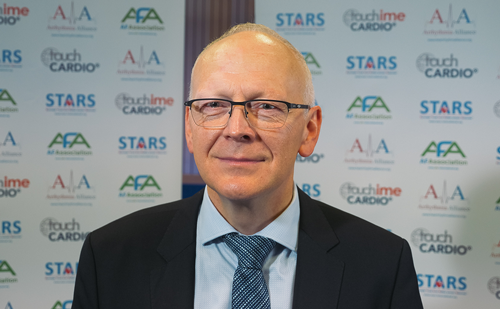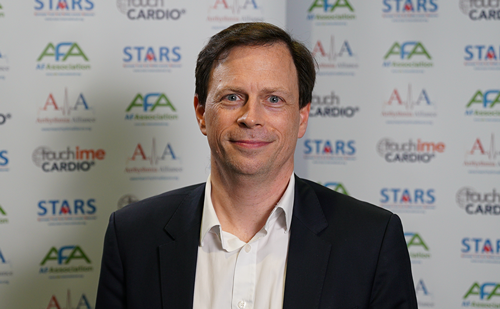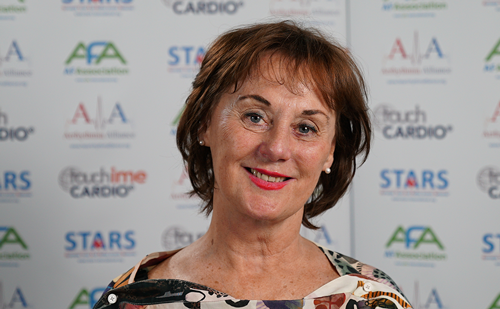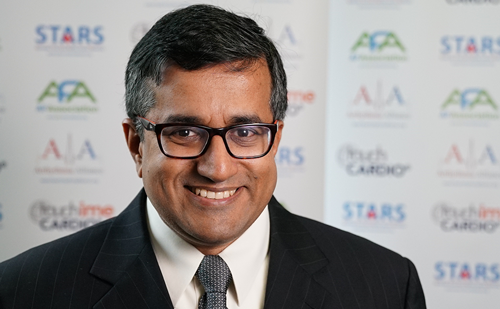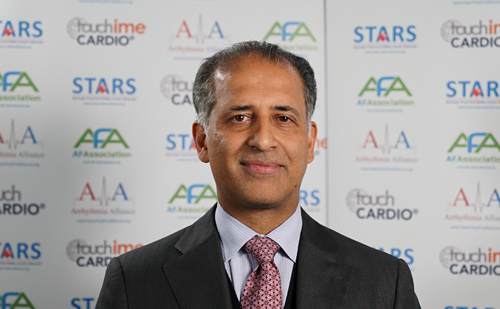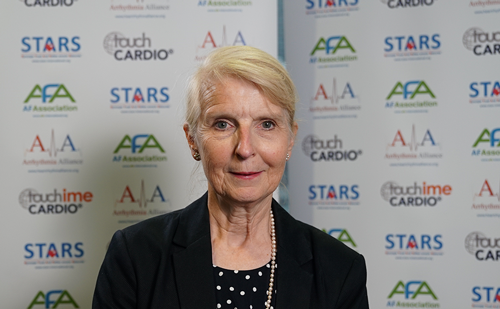Visionary Voices: Season 1, Episode 7
Join us in this episode as Trudie Lobban, Founder and Trustee of Arrhythmia Alliance, discusses the remarkable work of Pace4Life. This innovative charity repurposes cardiac electronic devices, delivering critical heart care to communities in low- and middle-income countries. Trudie shares powerful stories from their missions in Bangalore and Nigeria, highlighting how recycled devices are saving lives and bringing hope to those in need.
Learn more about Pace4Life and how you can get involved here.
[Transcript] Hello, and welcome to the Visionary Voices podcast series… read more
[Nicky Cartridge] Welcome to the Vision Revoices podcast. I’m Nikki Cartridge, head of content here at Touch Medical Media. And today, we’re exploring a life changing initiative that’s bringing hope to people around the world. We’ll be discussing Arrhythmia Alliance and their PACE for Life charity, which donates cardiac implantable electronic devices to provide access to critical heart care in low and middle income countries.
Our guest today is the wonderful Trudie Lobban, founder and trustee of Arrhythmia Alliance.
Trudie founded the organization in two thousand and four, and it’s just a really amazing society that brings together patients, carers, health care professionals, and other charities, all working together towards better diagnosis and treatment of arrhythmias.
Our platform, touchCARDIO, has had the pleasure of working with Trudy and her team for a number of years now.
So, Trudie, welcome to Visionary Voices. Thank you. Thank you so much for joining us.
[Trudie Lobban] You’re welcome.
So I think the idea of Pace4Life as a podcast topic came up in one of our calls a few months ago, and it made such an impact on me. I just couldn’t not invite you to join us and share it with our audience. So if it’s okay, shall we jump straight in?
And perhaps we could just give everyone a little bit of information about Pace4Life and what inspired it.
[Trudie Lobban] So Pace4Life is a program within Arrhythmia Alliance.
It had been running by one person in his bedroom in London, maybe sending two or three pacemakers or so a year.
But we were approached, to see whether we could take this further because demand was growing. And, one of our fellow trustees, Dr Andy Turley, said, I know the person that can run a charity, and I always say, well, I can’t implant a pacemaker. I can run a charity, and the doctors can implant. So together, we make a force to contend with. And PACE for Life is literally giving pacemakers implantable cardiac defibrillators to people who wouldn’t otherwise have access or be able to afford to receive these life saving treatments.
So we do this by collecting explanted devices from hospitals and from funeral homes. A lot of people don’t know, but if you have any metal implant, whether that’s a hip replacement or a cardiac device, if you wish to be cremated, it has to be removed prior to cremation. So thousands and thousands of devices are removed.
The same in hospitals. Sometimes the person no longer needs the pacemaker or they need to upgrade it. And any device and most of these devices now last have a battery life of twelve years or more.
And there was one family, for example, the father had a pacemaker for two weeks, and sadly, he died from something else. Now, normally, that pacemaker would have been explanted because he was going to be cremated, and it goes to landfill.
So, environmentally, that’s very bad, it’s very wasteful, and other lives could be saved. And what is wonderful and often very reassuring to families who are donating is that their loved one who has passed is enabling somebody else to live.
And I think that’s a lovely way of summing it up.
[Nicky Cartridge] Yeah. It really is. So is the use of cardiac devices in the way that you describe, has that been done before by anyone else?
[Trudie Lobban] No. No. It hasn’t. And we work with the University of Michigan, under an FDA approved research program because we weren’t going to jump into this without checking that it was legal, it was ethical, etcetera.
And fortunately so they are reconditioning and resterilizing devices.
They collecting a shipment from us this week.
We have so many devices being donated that they all have to have over five years battery life. But we take all the devices because it depends how often they’re being used. It doesn’t matter if someone’s had a pacemaker in for six years. If it’s not being used very much, the battery will still be good.
So they then go off to the University of Michigan, where under strict controls, they’re tested. If they’ve shown to have more than five years battery life left, they then go through FDA approved reconditioning, resterilizing, and repackaging. They are then sent back to us, and we can then send them on missions or send direct to the country if they have cardiac teams in that country.
We also take the end of shelf life, which is even better because often it’s the box that’s expired, not the sealed device. And there are so many of those sitting around. And with those, we don’t need to send them to be reconditioned because they are in perfect working order. So we appeal to hospitals to let us have any end of shelf life, not just devices, but the catheters.
Some of these countries, some of these hospitals, they don’t even have the gowns, the scrubs.They have they don’t have the sutures. They don’t have anything. We have to take everything. We don’t just go with little pacemakers in our pockets. We have to have everything to perform the surgery.
So we appeal for all of that, but most importantly are these devices.
[Nicky Cartridge] It’s awful to think that the devices and everything that you describe could go to waste even though it’s, you know, it’s perfectly fine and could save someone’s life in a different part of the world.
How long does the process take from sort of the refurb ready to have something that could go out on a mission?
[ Trudie Lobban] So it takes a few weeks. Let’s say two months it shipped and retested, reconditioned, resterilized, retested, and shipped back.
And that’s why we want to get up a production line so that we’ve always got some coming in. And, and how important it is to get the word out there.
For years now, hospitals have been explanting devices and throwing them in the yellow buckets in the cath lab, not knowing what happened to them. No one’s ever questioned it. And then when they find out that actually these buckets are being shipped off to the Netherlands for landfill, it’s just against everything that we’re all trying to do for recycling. And you think these devices have lithium batteries, so that’s going into landfill. In years to come, that’s going to be, you know, leaking into the soil. So it ticks every box to recycle. And even if they have less than five years battery life, there are some precious metals in these devices. So those can be extracted and raise funds that way, and those metals can be reused.
So I always say no device should end up in landfill. We can do something with it. And, hopefully, for many of them, we can provide life to others.
[Nicky Cartridge] Yeah. That’s a really important message.
So last time we spoke, you shared some really impactful stories from one of the missions that your team went on to Bangalore.
Could you share a few stories with us today?
[Trudie Lobban] Yes. Yeah. I will start with the story of our mission that went to Nigeria.
And I love that one of the professors that went when we always have a debrief after the mission. And he said, you have to remember when you step off that plane, you leave your professor. You leave any hierarchy behind.
We’re all equal. And he said, I was mopping the floor. I was doing everything. You have to be able to improvise.
And he made us laugh. There’s a photograph of him mopping the floor.
But the sad thing is the sink and the taps that they use to throw away the water is also where they wash the instruments and the clothes, and they also get the water for their coffee.
So you have to remember some of these places are so basic.
He was also they ran out of sutures because they didn’t realize the hospital wouldn’t have any. So there’s a photograph of him cutting stereo strips. So we, you know, the people that go, we’re so grateful because they give their time, their expertise.
They often take it from their annual leave, so they’re leaving their families behind. We cover the cost of the airfare, accommodation, vaccines, and visas, and they do not stay in luxury hotels or anything like that. So we’re so grateful for the nurses, the physiologist, the electrophysiologist, all donating their time and sharing their story.
So another story, we’ve now sent two missions to India, to Bangalore this year.
And, normally, when a team goes, they may implant between five and possibly ten devices in a week. They go for a week.
In Bangalore, India has some excellent hospitals and some very wealthy people than it has the very, very poor people that cannot access.
The only hospital in India based in Bangalore that is a charitable hospital and doesn’t charge for anything.
Unfortunately, it does have some doctors that are able to implant. So with two doctors from our side and the nurses and physiologist and the expertise and a couple of doctors in Bangalore, they managed to implant fifty one devices in four days, a record.
[Nicky Cartridge] That’s unbelievable.
[Trudie Lobban] But the one story that stood out when they went in March was a potato farmer who traveled on the back of a cart with his wife, his mother-in-law, his sisters, his children. He was the only male bringing an income into that family on a potato farm. And so he did all of that, but was suffering. And so they traveled for three or four days with him on the back of a cart because they’d heard about this mission. And they managed to operate, although they did say at the time it was touch and go, it may be fifty fifty because he was so seriously ill.
Our team operated. Two days later, he was sitting up in bed.
If he had died, he definitely would have died without the treatment or if he had died during because it was a very serious operation because he was so ill, then that family would have been on the streets of Bangalore and wouldn’t have been able to survive. They would have lost their only source of income. So we’re not just saving the life of someone needing a device. We’re saving the lives of their families as well.
Now this mission, this team went back just two weeks ago in October, and they did a follow-up. And the potato farmer turned up happy, healthy, and so, so grateful. So that’s just amazing. And he’s still the only provider for his extended family. So amazing for that family and wonderful for the team that went out. Absolutely. Whilst they were there, one other one last story.
Syncope fainting is very close to my heart because I established STARS thirty one years ago. And, one of the things that Prof. John Stephenson told me at the beginning is if you ever hear of anyone fainting during exercise and alarm unexpectedly, It may not be a vasovagal attack. It could be something more serious such as long QT. So a ten year old girl was brought to the hospital to see the team with a history of fainting.
They investigated, and she had long QT. So they were unable to implant an ICD, an implantable cardiac defibrillator, and they absolutely saved her life. So I feel it’s almost gone full circle from when I started a charity. And to end on that note, Prof. Stevenson, who I blame for all the work that I do and who supported me for thirty one years right up until last Christmas, Sadly, he died in March. But his family heard about PACE for Life and discussed it with me, and they have donated his pacemaker. It is currently being reconditioned.
I know it was only there for two years, so we know it’s got a lot of battery life. And I love to say that Prof. Stevenson, who started all of this, will continue to give life after his death. So it’s amazing how it can impact so many people. And the lady whose father died two weeks after the device is so thrilled because she feels that her father’s death wasn’t in vain either.
So everyone has something to gain from this, and we just call hospitals , clinicians.
Please contact us, donate the devices, and we can give you all the information. Or if you’re interested in becoming involved, whether it’s to travel on a mission or whether it’s to help us with the devices, anything and everything, we welcome volunteers.
[Nicky Cartridge] That was great. That was one of my questions because I know that many of our listeners are cardiologists, and, you know, it would be fantastic if they got involved in a future mission.
And I will include some details below this podcast, Trudie , to make sure that they can reach you.
I just wondered if we could have a little think about the future and whether you have any more missions planned because, obviously, you’ve made such a huge impact on people’s lives, you know, so far and everything that you’ve done.
[Trudie Lobban] Well, we’ve got more missions planned. The Indian team are already planning. They want to try and do two a year, if not more, because every day, a hundred and fifty people turn up at this hospital, and they can take five or ten people a day. You know, the demand and that’s just in Bangalore. India is a huge country as you know.
There are more missions hopefully going out to Africa. There’s demand for us to go to Pakistan, to Cambodia, to Sri Lanka. We are sending devices to Venezuela, Mexico, Cuba, Taiwan. So there’s such demand.
And we we need we can do all of this. What we need is the funding, sources for funding, getting those grants. So, again, as well as volunteering your time or your expertise or going on a mission, if you can do any fundraising, or if you have any connections that we could reach out to. As I say, we only fund the flight, the accommodation, the visa, and the vaccines. And everything else, food, etcetera, is paid for, you know, by our volunteers. We keep it to a minimum because we want all the funding to go to the missions to save lives.
[Nicky Cartridge] It’s amazing. And, you know, all of the volunteers that have worked so far on the missions are, you know, just an inspiration, I think.
[Trudie Lobban] Well, they’re so busy with their busy clinics in the UK and the US. We’ve sent a couple of teams from the US, and to think that they give up their holiday time, to do this. So they’re taking that away from their families. They’re not in clinic, and they come back, and they say it’s life changing for them.
They are in awe. They feel privileged. They are so grateful, and we know. We’re grateful to them. They say, no. You don’t realize this has enabled and encouraged me, and I realize just how important the work I do. And it’s just wonderful, absolutely wonderful listening to them.
[Nicky Cartridge] Well, Trudie, thank you so much for sharing those amazing stories with us. They made an impact on me the first time I heard them, and I’m so happy to hear that The Potato Farmer had a happy ending.
So we wish you all the best with all the amazing, incredible work that you do and your team do, and, you know, we look forward to hearing some updates in the future.
Thank you.
That just leads me to thank our audience for listening.
We’d love to hear your thoughts and any questions that you have on today’s episode.
You can find us on LinkedIn by searching for Touch Medical Media, and don’t forget to follow our podcast series on Poppin under visionary voices insights for health care professionals.
Well, that’s all for today’s episode. So until next time, it’s goodbye for now.
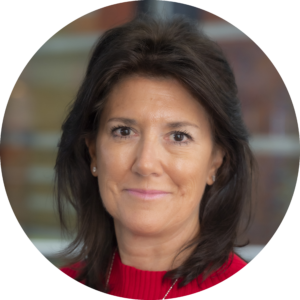 Trudie Lobban MBE, FRCP, is the founder of Arrhythmia Alliance, AF Association, and STARS, international non-profits dedicated to improving awareness, education, and support for heart rhythm disorders, atrial fibrillation (AF), and syncope. Inspired by her daughter’s diagnosis, she established STARS in 1993, which evolved into a global organization. Trudie has been instrumental in shaping healthcare policy, including introducing UK standards for arrhythmias and sudden cardiac death. Under her leadership, Arrhythmia Alliance and AF Association have launched impactful initiatives like the “Know Your Pulse” campaign.
Trudie Lobban MBE, FRCP, is the founder of Arrhythmia Alliance, AF Association, and STARS, international non-profits dedicated to improving awareness, education, and support for heart rhythm disorders, atrial fibrillation (AF), and syncope. Inspired by her daughter’s diagnosis, she established STARS in 1993, which evolved into a global organization. Trudie has been instrumental in shaping healthcare policy, including introducing UK standards for arrhythmias and sudden cardiac death. Under her leadership, Arrhythmia Alliance and AF Association have launched impactful initiatives like the “Know Your Pulse” campaign.
A prolific speaker and author, she has contributed to medical research, presented at global congresses and engaged with policymakers worldwide. Trudie regularly advocates for improved services for cardiac patients, meeting with government officials and healthcare leaders. Recognized for her contributions, she received an MBE in 2009 and a Fellowship at the Royal College of Physicians in 2014.
This content has been developed independently by Touch Medical Media. Unapproved products or unapproved uses of approved products may be discussed; these situations may reflect the approval status in one or more jurisdictions. No endorsement of unapproved products or unapproved uses is either made or implied by mention of these products or uses by Touch Medical Media. Views expressed are the speaker’s own and do not necessarily reflect the views of Touch Medical Media.








